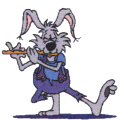
Music Theory & History ~ All about the Flute ~ Performing Advice
Music Psychology ~ Teaching ~ Fun Stuff ~ Mostlywind ~ Links

Click on the Main Categories above to start your adventure.
Below are the Sub-Sections for this category.
[Flute Teaching - Level One] [Flute Teaching - Level Two] [Flute Teaching - level Three]
Following an HMI visit, it was suggested that we be more succinct in our expectations within our department.
Feel free to use and amend the material.
(It would be helpful for me to have feedback if you do choose to use it!)
email: [email protected]
SCHEME OF WORK: FLUTE LEVEL 2 (INTERMEDIATE) |
KNOWLEDGE OF THE INSTRUMENT Pupils should be able to show a working knowledge of the following: * How to clean and maintain the flute * Tune the instrument alone. * Have a working knowledge of the various parts of the flute |
TECHNIQUE Pupils should be able to demonstrate the following: * Begin to demonstrate a good dynamic range * Secure breath control * Ability to start and finish notes in the correct manner * Ability to demonstrate advanced articulation i.e. double and triple tonguing * Begin to demonstrate vibrato * Have a good warm-up technique based on long notes, designed to develop stamina, range and flexibility |
SCALES AND ARPEGGIOS Pupils should be able to play from music the following: * Major: A, Bb, Ab - one octave, C, G, D, E, F, Eb - two octaves * Minor: F#, C#, B, F, C harmonic/melodic - one octave, A, E, D, G harmonic/melodic - two octaves * Arpeggios: As above * Chromatic: on G - one octave, on D - two octaves * Dominant 7th: key of C - one octave, key of G - two octaves * All scales should be played both tongued and slurred and should demonstrate fluency and an even sound production |
REPERTOIRE * Suitable repertoire should be drawn from recognised sources including tutor books, studies and pieces according to the pupil’s stage of development. * Suitable material maybe drawn from the various examination board syllabi. * Pupils should be encouraged to perform regularly. * Performances should demonstrate an understanding of musical interpretation, through a sense of character and style, in addition to technical control of the instrument. |
THEORY Pupils should be able to demonstrate a knowledge of music theory relevant to the chosen repertoire. In addition, pupils must recognise and understand the following: * Notation: All treble clef notes within the playing range (letter name and fingering) * Rhythm: All note values including triplets, Simple and Compound time signatures, Double dotted notes * Key signatures: All major and minor keys with up to four sharps or flats, Be able to construct a major scale and know the significance of wholetones and semitones *Transposition: How to transpose a melody. *Terms: All commonly used abbreviations and Italian terms |
SIGHT READING Pupils should be prepared to play a short piece at sight: * in simple or compound time * in any key, up to and including three sharps or flats * consisting of semibreves, minims, crotchets, quavers, semiquavers, triplets, dotted and tied notes * including any common indication |
Aural Pupils should be able to: * Clap from memory the rhythm of a melody in simple or compound time * Beat time to a melody in simple or compound time * Sing or play back from memory a simple four note phrase * Recognise a rhythmic or melodic change to a four bar phrase played twice with the change being made in the second playing * Complete a simple four bar phrase by adding two further bars to the first two, creating a cadence in the home key. These aural skills should be developed as an extension of those attained at level 1. The importance of listening at all times should be emphasised. |
RECOMMENDED BIBLIOGRAPHY Tutor Books; Otto Langey Flute playing Study Book: 125 Easy Classical Studies, Practice makes Perfect |
![]() E-Mail us your Links
E-Mail us your Links ![]()
Please return again soon.
Carole B. Miller
Copyright � 2002 [Mostlywind]. All rights reserved.
Revised: February 10, 2009